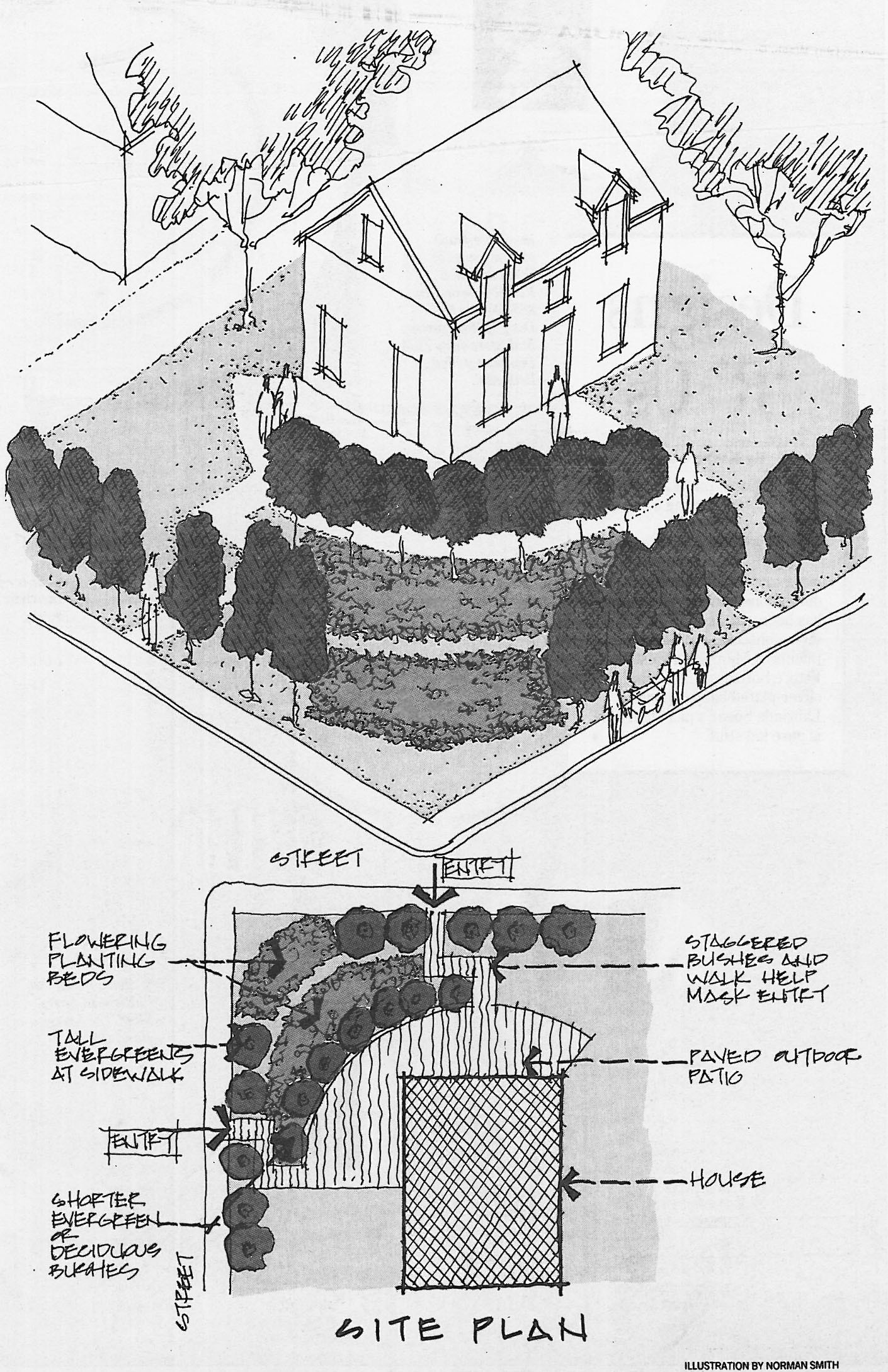Landscaping a Corner Lot
A Screen of Plantings Turns a Wide Open Expanse Into a Private Back Yard.
Houses on the corner of lots pose a special problem for architects and designers. Tall fences and walls set at the sidewalk edge are two common methods used to screen the street sides of such lots. While these work, they can appear forbidding to passerby and to the neighbors. A third solution is landscaping, using bushes, shrubs and other plantings to create a buffer zone between the house and street.
Corner lots have advantages and disadvantages. Rather than a front and back yard, a corner lot essentially has two side yards, one of which fronts the streets on two sides, as shown in the lower illustration. This larger side yard often becomes the de facto back yard. The visibility of a corner lot can set up a striking view of the house but also allows relatively unrestricted views of the wraparound yard. Since there is really no back yard, private get-togethers outdoors are difficult.
Thoughtful landscaping, while it can’t-and-shouldn’t-completely screen the house and yard, can help make the yard more usable and still highlight the house’s corner location.
There are several design issues to consider. Is the landscaping meant simply to screen the house or should it also help form an outdoor “room”? Should special views be created and entry sidewalks and paths be partially screened to enhance the sense of privacy? Finally, is the landscape intended to be an extension of the neighborhood lawns or a separate garden?
There are practical issues as well. The orientation of the house and whether it casts a large shadow will help determine the types of shrubs and other plantings to be used. The soil type and condition will also have an impact. The planting and layout possibilities are almost endless-tall or short, flowering or not, evergreens or deciduous, for instance-so it’s a good idea to consult a landscape architect before plants from the nursey.
The illustration here is one solution for a hypothetical corner lot. The design continues the line of neighborhood grass lawns at the sidewalk edge. From there, it steps back with staggered rows of bushes and shrubs that enclose a paved outdoor space and also mask entry into the yard from the street. In line with the corner, large beds of flowering plants are arrangement between the grass and the first row of shrubs to create an attractive swatch of color at the corner. The street bushes are rather tall evergreens such as yews or jumpers, and the second row is formed with lower evergreens or deciduous bushes such as barberry, azalea or burning bush. The planting beds might include ground covers such as cotoneaster or creeping varieties of juniper.
If you are considering work like this, “Timesaver Standards for Landscape Architecture” (McGraw Hill) and Landscape Plants of the Southeast (Sparks Press) are helpful reference books.
Norman Smith practices in the Washington area. For help with your design problems, send snapshots and dimensions to him in care of info@taurusdev.com
